COPENHAGEN: Cycling through the heart of some European cities can be a terrifying experience as you jostle for space with cars, trucks and scooters that whizz by with only inches to spare.
Thankfully for bicycle enthusiasts, a movement is afoot to create more room for cycling in the urban infrastructure.
From London’s “cycle superhighways” to popular bike-sharing programs in Paris and Barcelona, growing numbers of European cities are embracing cycling as a safe, clean, healthy, inexpensive and even trendy way to get around town.
Amsterdam, in the Netherlands, and the Danish capital, Copenhagen, are the pioneers of this movement, and serve as role models for other cities considering cycling’s potential to reduce congestion and pollution, while contributing to public health.
The trend is catching on also outside Europe, says John Pucher, a professor of urban planning at Rutgers University in New Jersey and co-author of a new book titled “City Cycling.” Pucher says urban cycling is on the rise across the industrialized world, though Europe is still ahead of the pack.
“Americans make only 1 percent of their trips by bike compared to 26 percent in the Netherlands, 18 percent in Denmark, and 8-10 percent in Belgium, Germany, Sweden, and Finland,” Pucher told The Associated Press, citing official statistics.
But you don’t need statistics to realize that cycling is in vogue. From airbag helmets to e-bikes, here are some the ways the bicycle renaissance has hit the streets of Europe:
CYCLE SUPERHIGHWAYS: They’re not anything as spectacular as multiple-lane expressways for cyclists, but city planners believe they’re central to the bicycle revolution. They combine bike paths with bike lanes on regular streets to give pedaling commuters a smooth ride from the suburbs to the city center.
BIKE SHARING: Bike sharing, or “city bike,” services that offer bicycles for short trips in the downtown area have come a long way since the first large-scale program started in Copenhagen in 1995. That concept was simple: Deposit a coin to release a bicycle from any of a number of bike racks across the city — like unlocking a shopping cart at the supermarket — and get your coin back when you return the bike (not necessarily to the same rack).
TWO-WHEEL PARKING: So you’ve cycled to town. Now where do you park? Europeans are creative in this respect, chaining their bikes to lamp posts, street signs and drainpipes, or just parking them in random clusters on street corners. But theft is a major concern.
COCKTAIL TRANSPORTATION: For people living far from the city center, getting to work by bicycle alone may not be time efficient. That’s why many European countries encourage mixed-mode commuting, allowing cyclists to bring their bicycles onto trains or subway cars. In the Netherlands, you can use the same smart chip card you use to catch a train or tram to get a bike from a sharing system and cycle the last part of the journey.
BICYCLE CHIC: Today cycling in Europe is embraced by people of all social classes and political persuasions. But a new subgroup has emerged: the cycling hipsters. They don’t just consider the bicycle as a means of transport, but a fashion statement.
AIRBAG HELMETS: Speaking of helmets, many cyclists don’t wear them, saying they look bad and ruin hairdos. Two Swedish designers came up with a solution that protects both head and hairstyle: An inflatable airbag that you wear around your neck in a collar.
E-BIKES: Electric bikes are one of the hottest cycling trends in parts of Europe. Also known as e-bikes or pedelecs, they are fitted with a small electric motor powered by a rechargeable battery, which can give you a nice boost when cycling uphill.
It’s not a new invention: bicycles powered by electricity have been around for more than a century. But sales have taken off with the development of lighter and higher-capacity batteries and sexier designs.
China is the dominant market, with more than 100 million e-bikes on the streets. But sales are surging rapidly in Europe, especially in Germany but also in the Netherlands, where about one in five bicycles is electric, according to industry reports.
Wheel you marry me? Europe has crush on cycling
Wheel you marry me? Europe has crush on cycling
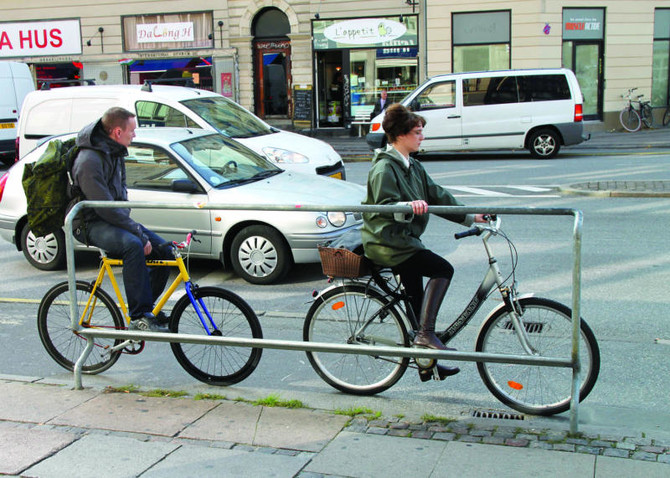
Simi, Haze Khadra share entrepreneurial insights at Harvard

DUBAI: US Palestinian beauty moguls Simi and Haze Khadra took to the stage at the Arab Conference at Harvard in the US to share insights into their business, SimiHaze Beauty.
The twins — who are often spotted alongside the likes of Kylie and Kendall Jenner as well as Canadian musician The Weeknd — spoke at the conference that ran from April 19-21.
“Thank you for having us as speakers at Harvard’s ACH24, discussing our unwavering values in our lives and business which has not only brought us more purpose, but also more success. We also discuss the next frontier of the beauty business as founders (of) @simihazebeauty,” the pair shared on Instagram.
The brand is set to be available in the GCC via French multinational retailer Sephora starting from May 2024, with the sisters scheduled to jet to Dubai for a launch event on May 2.
The twins launched their US-born cosmetics brand in 2021 with a range of stick-on makeup designs that can be placed on the face for a bold beauty look achievable within seconds. The sticker book features an array of edgy designs inspired by their favorite DJ looks from the past, such as chrome wings, neon negative space eyeliner and holographic cat-eyes.
SimiHaze Beauty has expanded to include a range of products, including lipsticks, bronzing powders, a lifting mascara and more.
The beauty entrepreneurs and DJs, who grew up between Riyadh, Dubai and London, are known for their contemporary beauty looks and are often spotted in public with futuristic makeup, something they have managed to encapsulate in their brand.
Earlier this month, the sisters celebrated their birthday with a call for donations to Gaza.
“Thank you for all the sweet birthday messages. Feeling all the love and radiating it all back to you. All we want for our (birthday) is for you to help us build a NICU for the babies in Rafah,” the sisters posted.
“Many premature babies in Gaza are in dire need of help as a result of the ongoing blockade by Israel. Newborns share incubators as supplies run low at the few swamped remaining hospitals that have not been attacked. @heal.palestine is actively working on building a new NICU in Rafah while supporting the only other existing NICU at the Emirati Hospital by providing medication and all the other supplies to help give premature babies the care they need,” the sisters posted on Instagram earlier this week, referring to US-based nonprofit organization Heal Palestine.
The pair have been vocal about the conflict in Gaza, posting frequently on their social media platforms as well as hosting video discussions on YouTube on various aspects of Israeli-Palestinian politics.
Artist Abdullah Al-Saadi represents the UAE at Venice Biennale
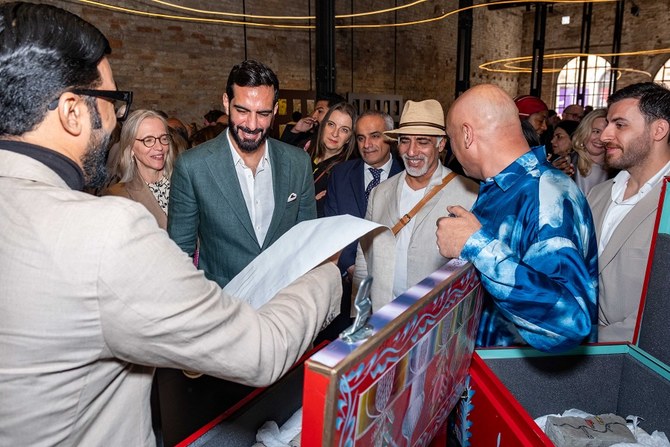
VENICE: Emirati conceptual artist Abdullah Al-Saadi is representing the UAE at the 60th Venice Biennale, curated this year by Adriano Pedrosa under the theme of “Foreigners Everywhere. Stranieri Ovunque.” The pavilion’s exhibition, which opened on April 20 and runs until Nov. 24, was curated by Tarek Abou El-Fetouh.
Al-Saadi has played a pivotal role in the development of the UAE’s evolving art scene — his multidisciplinary practice includes the mediums of painting, drawing, sculpture, performance and photography, as well as collecting and cataloguing found objects and the creation of new alphabets.
“Since I was a student, four decades ago, art has been an integral part of my daily life,” Al-Saadi said in a statement. “My art is the result of interactions with places, people, ideas, and aesthetics that I encounter every day where I live and in my journeys. I find myself driven to document these experiences visually or in written diaries and contemplations, seeking to transfigure the ordinary with the passage of time.”
“I am representing myself in Venice as an artist foremost and then as a local Emirati artist,” Al-Saadi told Arab News. “This pavilion will showcase my artistic journey over a long period of time since after university through eight works, two of which are new commissions,” he said of the ongoing show titled “Abdullah Al-Saadi: Sites of Memory, Sites of Amnesia.”
One of the artistic journeys he made that will serve as a new artwork took place amid the Arabian landscape.
“I spent seven days in the valley studying the tea, the coffee, and bread,” Al-Saadi explained to Arab News. “Then after one week I rode my bicycle, and I went to the mountains. During that time, I was reading a book on the Silk Road and trying to imagine how it was to travel on the Silk Road and I compared my way of traveling with how it was to travel on the Silk Road long ago.”
“Abdullah’s work is comprised of multiple aspects, from his diaries to sketches, to landscapes, scrolls and other objects that he creates,” Laila Binbrek, Director of the National Pavillion UAE, explained to Arab News. “They all stem from his diary — a diary he has been keeping for the last 40 years. Every day he writes in his diary.”
Christie’s Art of the Islamic and Indian Worlds auction highlights rare finds in London
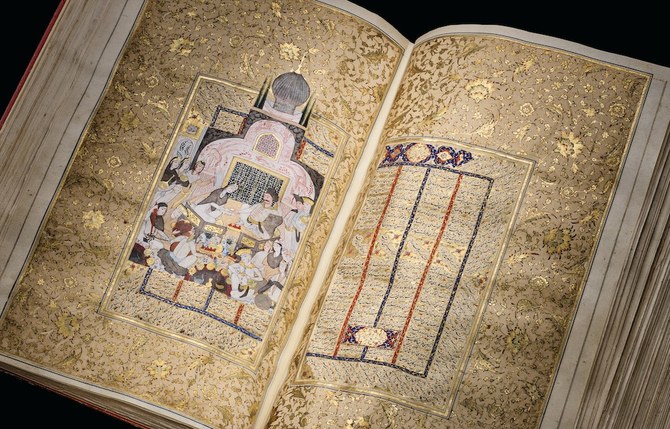
LONDON: Christie’s Art of the Islamic and Indian Worlds spring sale will see 261 lots —including paintings, ceramics, metal work, works on paper, textiles, rugs and carpets — go under the hammer at a live auction at their London headquarters on April 25.
Arab News was given an exclusive viewing of some of the works prior to their public pre-sale showing from April 21-24.
Sara Plumbly, Christie’s Head of Department for Islamic and Indian Art, gave her expert insights into some selected pieces.
These included lot 45, an exquisite miniature octagonal Qur’an, dated AH 985/1577-8 AD, which was made in Madinah, the Qur’an has an estimate of $13,000-19,000.
“We very rarely see manuscripts that were copied in the holy cities. So this being copied in Madinah makes it very rare,” she explained.
“It has a Naskh script. This a very steady, cursive script which is relatively easy to read — unlike some of the others. For example, Nastaliq script, which is copied on the diagonal, is much trickier to read. For Qur’ans you would almost always see a Naskh script for ease of reading. Nastaliq is usually reserved for poetic manuscripts,” she said.
This miniature Qur’an would be small enough to carry with the owner on a daily basis, usually around the neck. Alternatively, they would be hung in their silver boxes on an ‘alam (standard or flag) and carried into battle.
Plumbly, who completed her master’s degree in Islamic Art and Archaeology at the University of Oxford, has lived and travelled extensively across the Middle East and North Africa, including extended periods in Egypt, Syria, Lebanon, Saudi Arabia and Sudan.
Another stunning item in the sale is a Watercolor Album depicting a selection of known prestigious and rare Iznik ceramics from the Louis Huth collection. It comprises 44 single and double-page watercolor paintings of Iznik bowls, flasks, ewers and dishes.
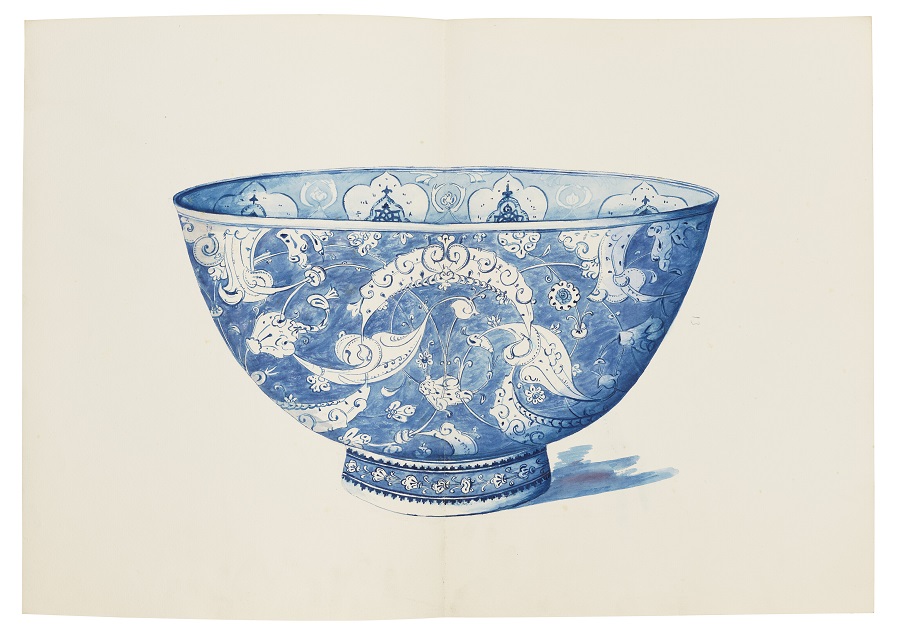
It was also fascinating to see a rare and complete illustrated manuscript copy of the Khamsa of Nizami by 12th century Persian poet Nizami Ganjavi, together with the Khamsa of Amir Khusraw Dihlavi, a 13th century Persian Sufi singer, musician, poet and scholar. The colors in the illuminations leap off the pages as though created yesterday.
Plumbly also pointed out the exceptional workmanship of an early 13th century Kashan pottery bowl, excavated in Iran’s Kashan in 1934.
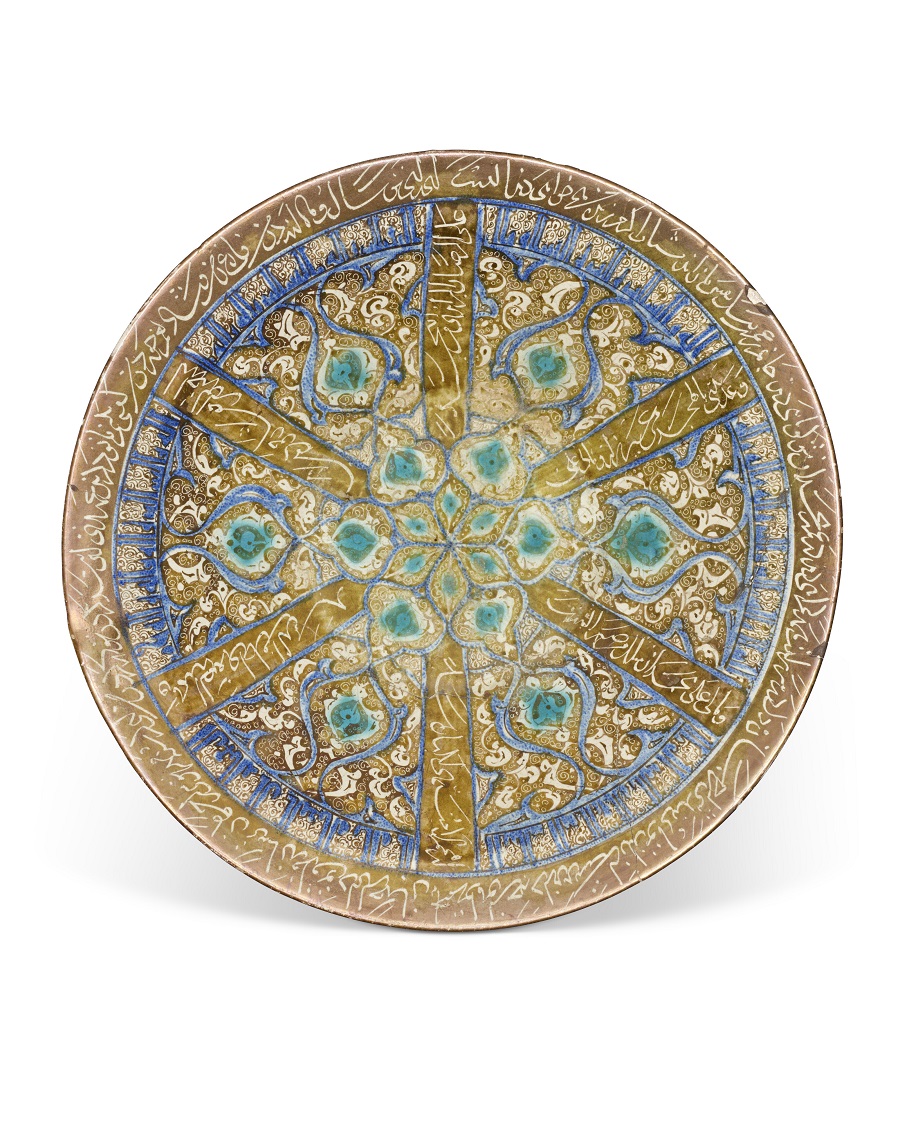
“This type of Kashan ceramics have a wonderful luster. It’s a very difficult technique to perfect. This bowl has a really beautiful dark gold color which is very well controlled. The condition is remarkable. It’s one of those ‘best of type’ objects,” Plumbly observed.
Sofia Boutella dazzles at London ‘Rebel Moon’ screening
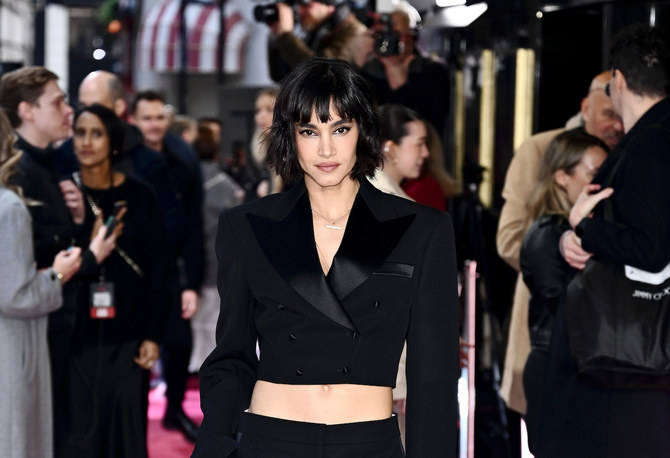
DUBAI: French-Algerian actress Sofia Boutella turned heads at the UK premiere of her film “Rebel Moon — Part 2: The Scargiver” in London this week.
Boutella wore a black suit from British fashion designer Stella McCartney with a cropped satin blazer and low-rise straight-leg trousers. She styled her short, dark hair in loose waves, complemented by dramatic cat-eye makeup.
In the sci-fi adventure — a sequel to last year’s “Rebel Moon — Part One: A Child of Fire” — which debuted on Netflix April 19, a peaceful colony on the edge of a galaxy finds itself threatened by the armies of a tyrannical ruling force.
Kora, played by Boutella, has assembled a small band of warriors — outsiders, insurgents, peasants and orphans of war from different worlds who share a common need for redemption and revenge, and must band together to fight the Motherworld.
Snyder previously spoke about the two-part epic space opera at Netflix’s Tudum global fan event in Brazil, where he showcased a behind-the-scenes look into the making of the film, based on a concept he has been developing since college.
“I’ve been working on this story for quite a while,” Snyder said on stage, according to Deadline. “It’s about a group of farmers on the edge of the galaxy that get visited by the armies of the Motherworld, who are the bad guys. The farmers have to decide to fight or submit.”
He continued: “I don’t want to give it all away, but if they had decided to fight, let’s say that was an option, they would have to travel around the galaxy to find warriors to fight with them. And so, it had us traveling quite a bit.”
Kora is not Algiers-born Boutella’s first role as a sword-wielding extraterrestrial. The actress, who at the age of 10 fled to Paris with her family during the Algerian civil war, is known for her breakout performance in the Oscar-nominated film, “Star Trek Beyond,” in which she portrayed the fierce alien warrior, Jaylah.
Rami Kadi unveils couture collection in Saudi Arabia’s AlUla

DUBAI: Lebanese designer Rami Kadi presented his latest haute couture collection on Friday in AlUla with star-studded guests.
His summer/spring designs offered something for everyone. The dresses showcased a variety of necklines, ranging from halter gowns and plunging V-shaped dresses to off-the-shoulder styles, strapless designs and more.
The dresses, crafted from fabrics such as tulle, chiffon and crepe, exuded voluminous, glitzy and metallic aesthetics. However, there were also satin options and simpler designs available.
The collection boasted a palette of pastel hues including pink, peach, blue, green, purple, and an array of other colors such as off-white, beige, silver and gold.
The show was a collaboration between Kadi and AlUla moments. It was attended by Lebanese superstar Najwa Karam, Saudi actress Mila Al-Zahrani, Tunisian actress Dorra Zarouk, and Saudi influencers Nojoud Al-Rumaihi and Lama Alakeel.











